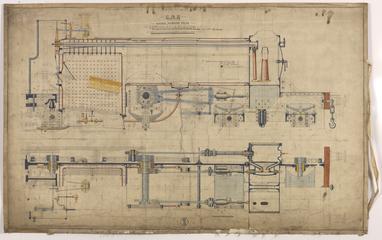
Great Northern Railway Co
The Great Northern Railway Co (GNR) was authorised in 1846 to build a line from London to Doncaster via Hitchin, Peterborough and Grantham with a loop line from Peterborough to Bawtry via Lincoln and branches to Sheffield and Wakefield. The first section between Louth and Grimsby opened in 1848. The proper main line was opened in stages; by 1849 services were running from Peterborough to Doncaster via Lincoln and in 1850 services from London (Maiden Lane) to Peterborough started. In 1852 Kings Cross station and the main line between Peterborough, Grantham and Retford were completed. Coupled with its running powers over parts of the Lancashire & Yorkshire Railway and the York and North Midland Railway north of Doncaster, the GNR offered services between London and York. A combination of running powers, acquisitions and promotion of new railways, eventually gave the GNR access to Bradford Cambridge, Halifax, Leicester and Nottingham. The GNR also invested in joint railways including the Great Northern & Great Eastern Joint (Huntingdon-March–Doncaster), the Cheshire Lines Committee and in 1889 the Midland & Great Northern Railway giving access to North Norfolk, Norwich and the east coast.
The GNR main line was part of the through route to Scotland and it established the East Coast Joint Stock, a common pool of vehicles, with the North Eastern Railway and the North British Railway. The Flying Scotsman was the most famous train service on that route. The GNR operated intensive passenger express services as well as suburban services to Hatfield, Dunstable and St Albans, and in North London and West Yorkshire, and local passenger services in Lincolnshire and the East Midlands. Its principal freight business was the transport of coal from Yorkshire, and later from Nottinghamshire and Derbyshire, to London, and the conveyance of coal to and bricks from the brickfields in the Peterborough area.
The GNR’s principal works were at Doncaster where it built locomotives and carriages. Its famous locomotives include the Stirling Singles, Ivatt’s Atlantics and Gresley’s 1922 Pacific.